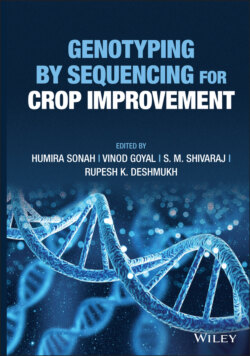Читать книгу Genotyping by Sequencing for Crop Improvement - Группа авторов - Страница 73
3.8 Challenges for Whole‐Genome Resequencing Studies
ОглавлениеAlthough, various platforms such as Illumina, Roche 454, and SoLiD™ have significantly increased the throughput with a decreased error rate but many plant genomes represent unique challenges because of their repetitive nature which leads to a challenge for reliable genome assembly. This might be due to high copy number and transposable elements amplifying nature in a large number of plants leading to consequences in assembly. Another major constraint is that not all species of plant are homozygous inbred diploids. Currently, there is no WGR technique that meets all conservation geneticists' needs. However, with the advancement in next‐generation sequencing technologies, these challenges can be overcome.
Figure 3.2 Genome‐wide association studies (GWAS) in rice seedling for salt‐tolerant trait. For GWAS, quantile–quantile plots and Manhattan plots are represented for (a) indica, (b) japonica (c) represents population with the help of CMLM. In quantile–quantile plot, black and red points represent GLM and CMLM, respectively. In Manhattan plots, genes represented by red lines were previously cloned while QTLs were represented by black lines, which were considered to be important. The suggestive threshold (P = 1.0 × 10−4) for each population is indicated by dashed horizontal line.
The figure is reproduced from Yuan et al. (2020) which is available under a Creative Commons Attribution 4.0 (CC‐By 4.0) International License, which permits reproduction.
